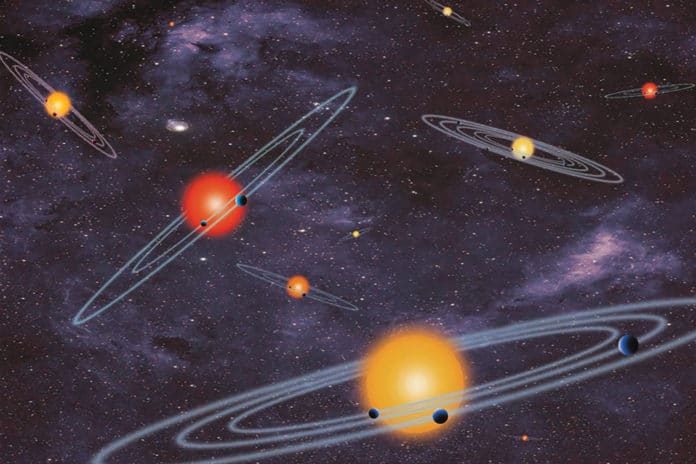To date, more than 5,000 exoplanets have been discovered and are considered “confirmed.” However, some exoplanet detections require follow-up observations to confirm whether or not the exoplanet is real.
MIT astronomers have shrunken this list by at least three. A new study reports that three, and potentially four, planets are misclassified as exoplanets. They suggest that these suspected exoplanets are likely small stars.
Using updated measurements of planet-hosting stars, astronomers cross-checked the size of the planets. They found that these objects, which NASA’s Kepler Space Telescope discovered, are too big to be classified as planets.
These objects are: Kepler-854b, Kepler-840b, and Kepler-699b. They are between two and four times the size of Jupiter.
The study’s first author Prajwal Niraula, a graduate student in MIT’s Department of Earth, Atmospheric, and Planetary Sciences, said, “Most exoplanets are Jupiter-sized or much smaller. Twice [the size of] Jupiter is already suspicious. Larger than that cannot be a planet, which is what we found.”
The fourth object, Kepler-747b, is about 1.8 times Jupiter’s size. It is relatively far from its star, and the amount of light it receives is too small to sustain a planet of its size.
According to scientists, Kepler-747 b’s planetary status is suspect but not wholly dubious.
Study author Avi Shporer, a research scientist at MIT’s Kavli Institute for Astrophysics and Space Research, said, “Overall, this study makes the current list of planets more complete. People rely on this list to study the population of planets as a whole. If you use a sample with a few interlopers, your results may be inaccurate. So, it’s important that the list of planets is not contaminated.”
Niraula explained, “If you have two objects close to each other, the gravitational pull of one will cause the other to be egg-shaped, or ellipsoidal, which gives you an idea of how massive the companion is. So you could determine whether it’s a star-star or star-planet system, just based on that tidal pull.”
When astronomers combined it through the Kepler catalog, they noticed a signal from Kepler-854b. The signal was huge and pretty. It indicated that this could not be from a planet.
Shporer said, “Then we thought, something doesn’t add up.”
Astronomers, thus again, took a glance at the star and the planetary candidate. Kepler-854b was spotted in 2016 via transit detection. Astronomers calculated its size based on stellar estimates that were less precise today.
Niraula found that with Gaia’s improved estimates, Kepler-854b turned out to be much larger, at three times the size of Jupiter.
Shporer said, “There’s no way the universe can make a planet of that size. It just doesn’t exist.”
Based on the findings, astronomers confirmed that Kepler-854b is not a planet at all, but instead, a small star orbiting a giant host star.
The team poked through Kepler catalog’s more than 2,000 planets. They ultimately discovered three stars whose sizes significantly changed based on Gaia’s improved measurements.
From these estimates, the team recalculated the size of the planets orbiting each star and found them to be about two to four times Jupiter’s size.
Niraula said, “We now have three objects that are now not planets, and the fourth is likely not a planet.”
Shporer said, “This is a tiny correction. It comes from a better understanding of stars, which is only improving all the time. So, the chances of a star’s radius being incorrect are much smaller. These misclassifications are not going to happen many times more.”
Journal Reference:
- Prajwal Niraula et al. Revisiting Kepler Transiting Systems: Unvetting Planets and Constraining Relationships among Harmonics in Phase Curves. DOI: 10.3847/1538-3881/ac4f64
